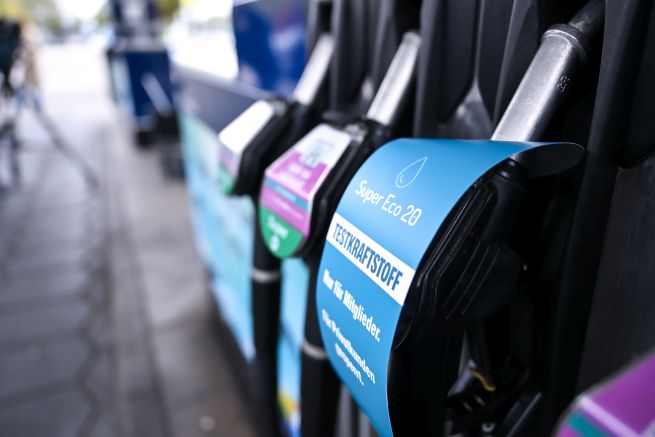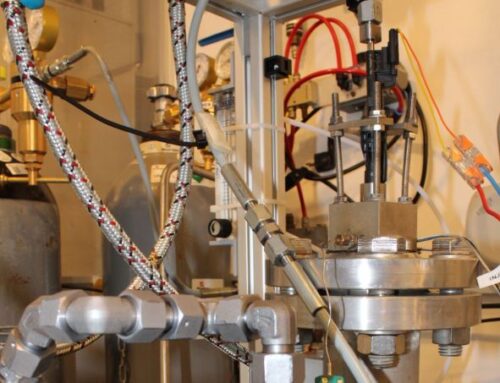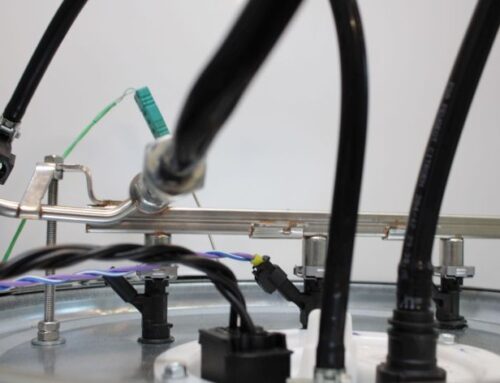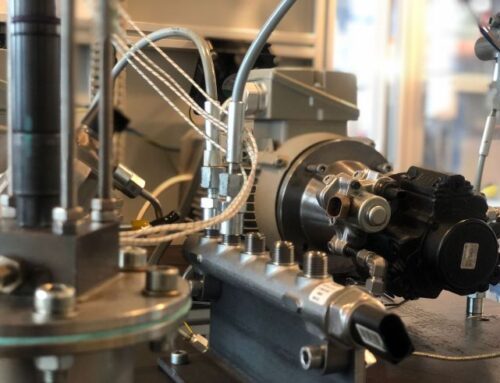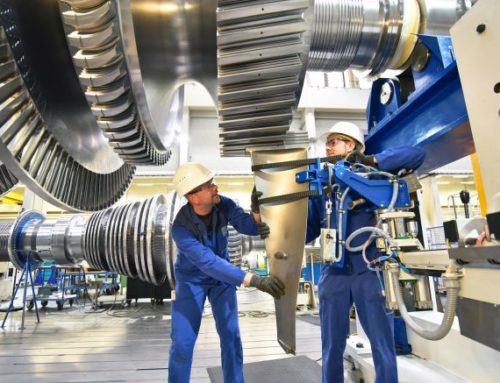Compliant options
10. Oktober 2024 – Increasing the proportion of ethanol in petrol could be an option for reducing greenhouse gas emissions. Although there is currently no valid standard for fuel with more than 10% and up to 50% ethanol, it is still permitted to be sold at filling stations for research and testing purposes. To do so, operators must comply with a number of regulations and fulfill certain requirements.
Petrol fuels approved for general trade in Germany must comply with DIN EN 228 (E5, E10) or DIN EN 15293 (E85). E10plus fuels with an ethanol content of more than 10% by volume up to 50% by volume do not comply with these standards. In particular, they differ from the main fuel types E5 and E10 in that their oxygen content exceeds their limit value of 3.7% by weight. However, current activities by the European Committee for Standardization (Comité Européen de Normalisation, CEN) indicate that fuel with a maximum bioethanol blend of 20% could be included in a standard for petrol, thus paving the way for approval of the fuel in Europe, and therefore also in Germany.
Official manufacturer approvals already exist for fuels with a maximum of 20% ethanol by volume (E20) in parts of the vehicle fleet currently registered in Germany. In October 2023, a petrol pump at a filling station in Mannheim was rededicated to dispensing Super E20 fuel for research and testing purposes. The filling station operator and the vehicle fleets and automotive industry involved are testing E20 as a fuel as part of a field trial. The knowledge gained from this is to be incorporated into the standardization process for E20 fuels.
Exemption regulation in the 10th BImSchV
In Germany, the 10th Ordinance of the Federal Immission Control Act (BImSchV) regulates which fuels may be placed on the market. The legislator has deliberately created exceptions for the placing on the market or transfer of a fuel to third parties for fuels that deviate from the usual pattern of specifications and still have to undergo the standardization process. They may be supplied to a limited group of users for research and testing purposes for a limited period of time (Section 16 (Exemptions), Paragraphs 1 and 2 of the 10th BImSchV).
The group of users must be restricted by suitable measures, such as a fuel card or a lock on the fuel pump, so that misfuelling of vehicles by unauthorized users can be ruled out. The dispensing of E10plus fuel must be reported to the authority responsible for the filling station. If necessary, proof must be provided for any inspections that the dispensing of E10plus is carried out in accordance with the applicable regulations in water law, building supervision, the Ordinance on Industrial Safety and Health and the EC Machinery Directive. While preparing this evidence, cooperation with the authority responsible for the filling station is required.
Ethanol must not enter the separator
Among other things, safety and waste water regulations must be observed. With regard to fire and explosion protection, there are no concerns about the use of bioethanol at filling stations based on investigations by the Physikalisch-Technische Bundesanstalt (PTB), provided that the ethanol content in the fuel does not exceed 60% by volume.
Section 62 of the Water Resources Act (WHG) formulates requirements for the handling of substances hazardous to water, which also apply to filling stations and self-consumption filling stations.
Accordingly, filling stations must comply with the generally recognized rules of technology and be constructed, maintained, operated and decommissioned in such a way that water pollution is excluded. The requirements of the WHG are further specified in the German Ordinance on Installations Handling Substances Hazardous to Water (AwSV). According to Section 17 (1) AwSV, this includes the planning of filling stations and, in application of Section 24 (3) AwSV, maintenance. These requirements are specified by the Technical Rules for Substances Hazardous to Water (TRwS) of the Deutsche Vereinigung für Wasserwirtschaft, Abwasser und Abfall (German Association for Water, Wastewater and Waste).
As there is currently no reliable data on the safety of discharging leaked E10plus fuels into the waste water of filling stations, TRwS 781 generally excludes discharge via light liquid separators at filling stations. The concern of TRwS 781 is not the leakage of dripping quantities during the refueling of vehicles, which can be classified as rather harmless. The focus is primarily on possible accidents during the refueling of storage tanks by tank trucks, where potentially large quantities of fuel could escape and enter the wastewater.
As an alternative to the light liquid separator, TRwS 781 offers the option of discharging the waste water into an underground collection chamber that has no connection to the sewer system and can be emptied by a recognized specialist company if necessary. As very few public filling stations are likely to have such a collection chamber, most of them only have the option of retaining escaping E10plus fuel quantities on the filling area of the filling station, which is another option opened up by TRwS 781. A number of conditions must be met for this.
Definition of hose system for delivery
The type of retention of E10plus fuels at the filling station has an impact on the options for delivery by tanker truck. In the case of retention on the filling area, TRwS 781 generally excludes the use of a 3” filling hose with tanker truck coupling, which is commonly used for refueling. Alternatively, TRwS 781 defines various hose systems with which a tanker truck may deliver E10plus fuel. Of the available options, the “one-piece 2” filling hose with dry couplings at both hose ends” proved to be practical during a test refueling. For delivery, the floor drains on the filling area must be suitably covered so that the fuel cannot get into the light liquid separator. Cover cushions, such as those usually carried in tankers, are sufficient for this purpose because TRwS 781 assumes that an accident cannot occur with hose systems defined therein, and that cover cushions are suitable for collecting dripping quantities.
Check compatibility of materials with E10plus
The physical-chemical properties of bioethanol-containing fuels differ from those of purely fossil fuels depending on the respective bioethanol blend rate. Therefore, the compatibility of the material types that are usually found in the filling station infrastructure must be checked with E10plus fuels. Petrol stations that have received E85 approval in the past must also provide proof that they are fundamentally suitable for dispensing E10plus fuels in accordance with water law, building regulations, the Ordinance on Industrial Safety and Health and the EC Machinery Directive. A procedure similar to that for the introduction of AdBlue at filling stations is recommended for the introduction of E10plus.
In practice, compatibility is influenced by various factors. For this reason, filling station operators should check with the manufacturer or supplier of the original equipment or the specialist planner of the filling station to ensure that all installed equipment is fully compatible with the fuel to be stored and dispensed at the filling station, taking into account the targeted ethanol blend rate. In addition, the dispensers and tankers must be adjusted to the respective density of E10plus fuels.
Conclusion
Petrol station operators planning to dispense E10plus fuels should always work proactively with the relevant authorities and the authority responsible for the filling station responsible for the petrol stations to obtain certification of compliance with the legal requirements when dispensing the product at the respective location. Compliance should not be an obstacle for most filling stations.
The author
Dr.-Ing. Klaus Lucka is managing partner of TEC4FUELS GmbH, a competence center for conventional and alternative fuels and lubricants and their application in existing and new technologies. Klaus Lucka contributes his expertise on the production and application of alternative and conventional fuels and trends in the mineral oil industry to working groups and committees of various institutions.
